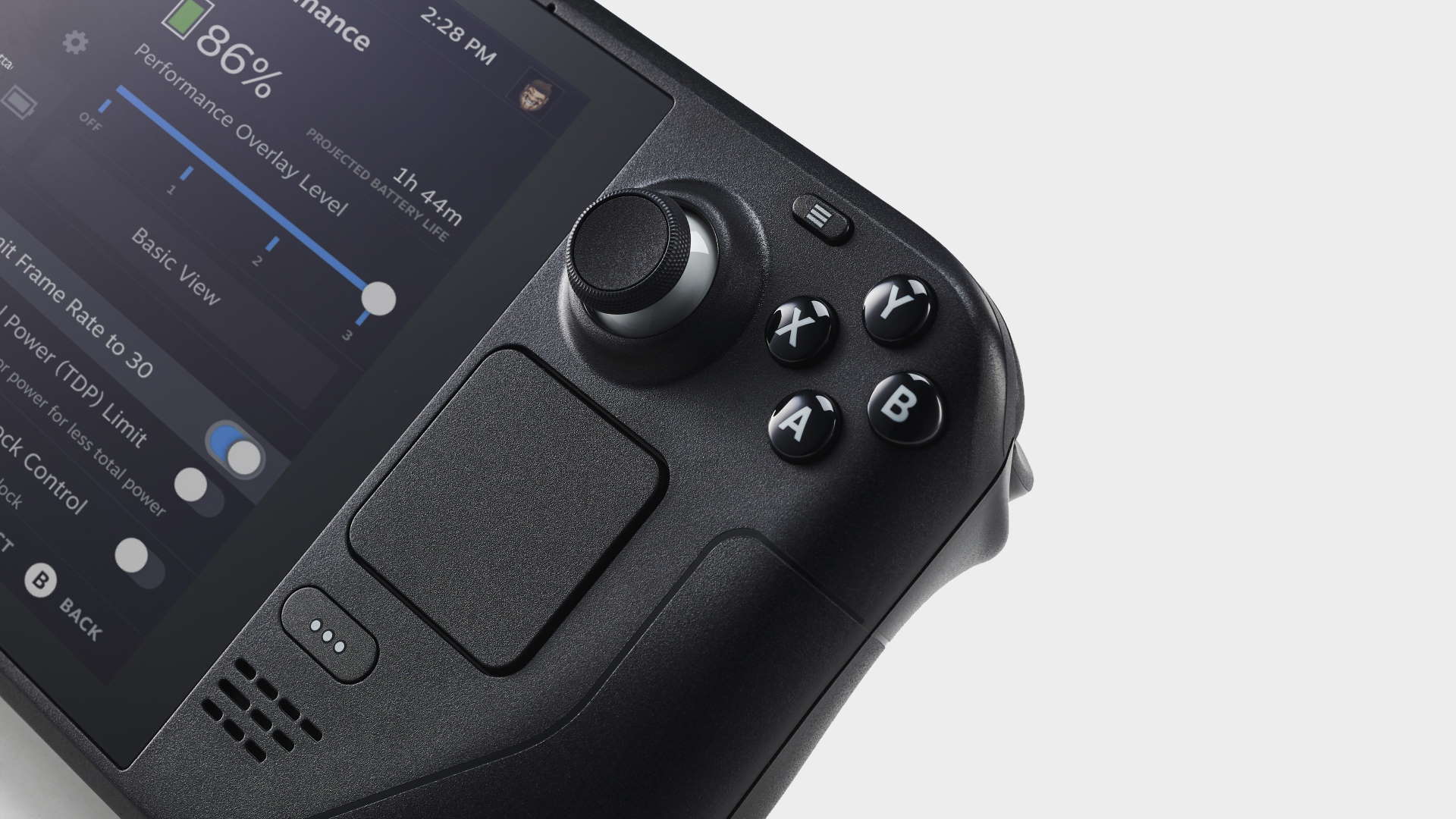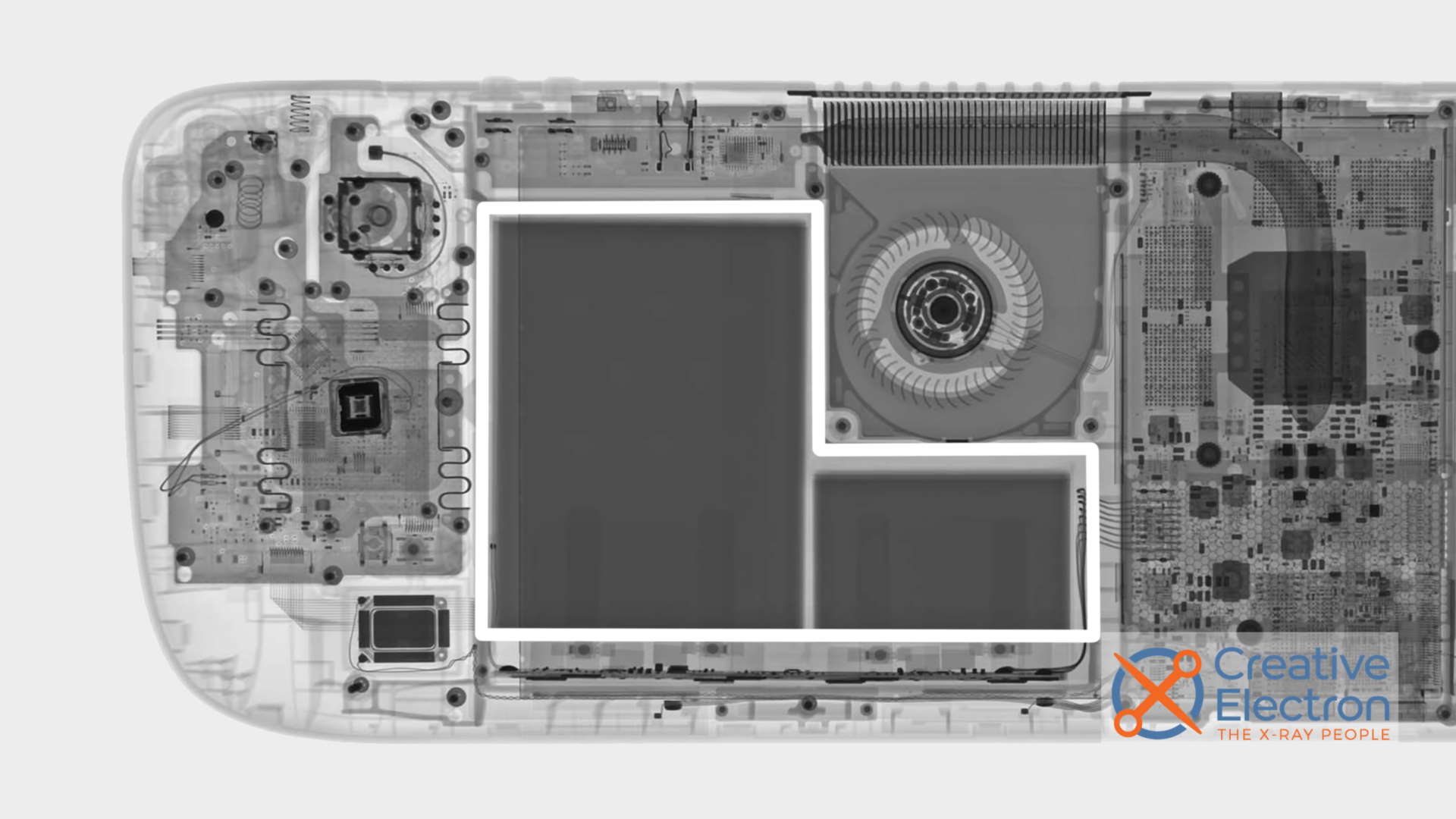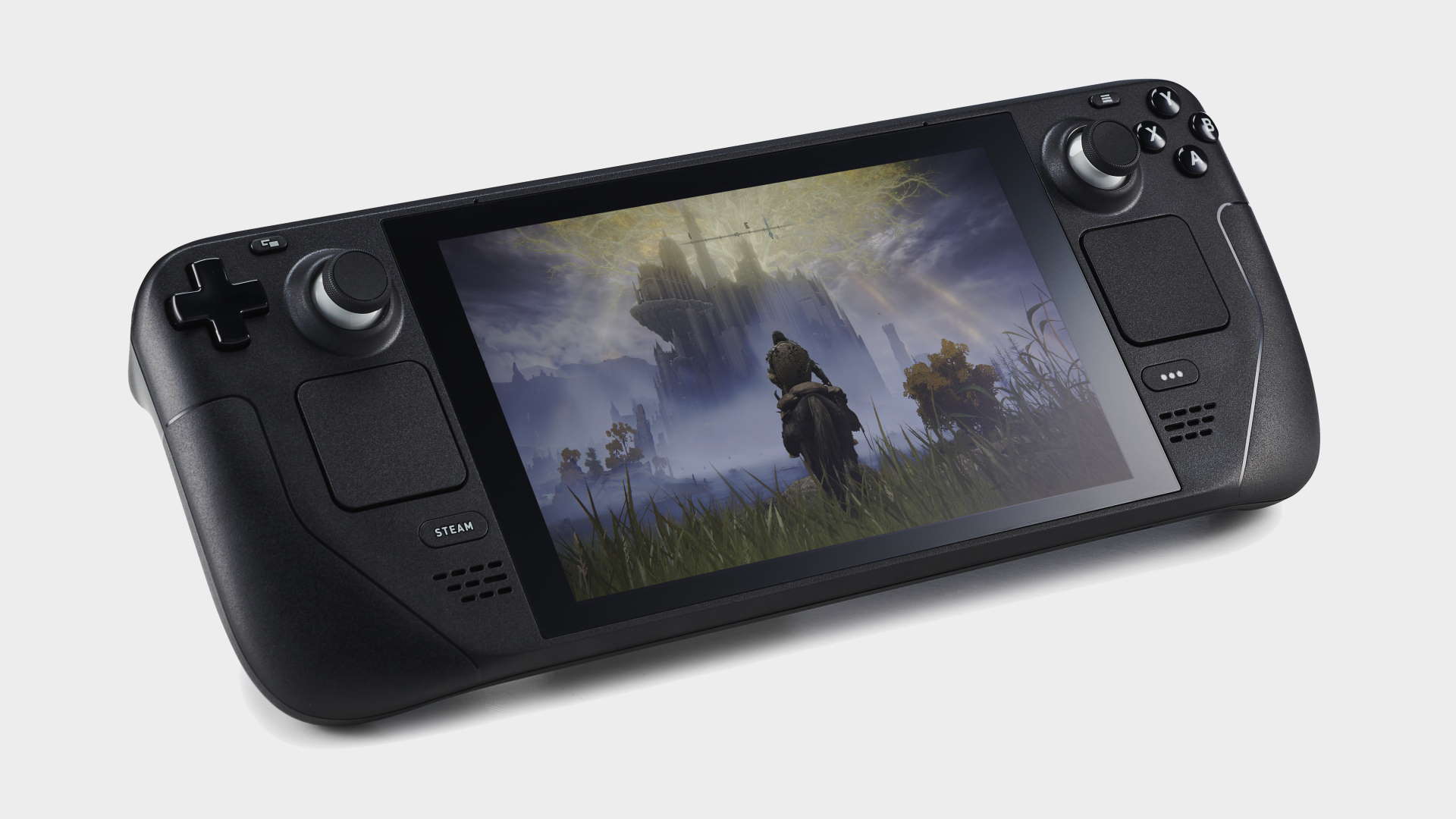Valve 'put as much battery as we possibly could' into the Steam Deck
But did consider having different memory options as well as storage between the three versions of Deck.

The Steam Deck's battery life has been a key topic of discussion both ahead of launch and once we actually got our hands on Valve's handheld gaming PC. And it was obviously a key topic for the designers when they were sketching out what they would be able to jam into the Deck. From talking with two of Valve's design team recently, it's obvious the basic topic was 'how big can we go?'
The Deck has a 40Wh (or 5,313mAh) battery inside it, but it's of a slightly strange L-shaped design. If you check out the excellent iFixit teardown of the device you'll see the X-ray shot they took of it, which clearly shows the two-cell design where Valve has angled the battery around the limited space on offer inside the chassis.
I spoke to Greg Coomer and Jay Shaw, designers at Valve who have been, and still are, working on the Steam Deck about the limitations on the size of battery they could get into the new handheld.
"We basically put as much battery as we possibly could into a device of this size, given everything else that has to fit into it," says Coomer. "So, you know, obviously, we wanted the most battery that we could fit."
But as there were plans for different tiers of Steam Deck—with a budget, mid-range, and high-end option—I was curious whether there had ever been plans to add in higher capacity batteries alongside higher capacity storage options.
"We didn't really talk much about having the battery itself vary between the versions of Steam Deck, when we were considering what things could differ between those models," Coomer says. "We mostly talked about other things. We considered memory, but we didn't really have an array of APUs to choose from—we were able to produce one of those—so it wasn't really an option to have there be different performance on that side."

It's an interesting aside on the memory front, and I would guess that might have then been a case of 8GB LPDDR5 in the budget Deck, and then maybe 16GB and 32GB in the higher-spec models. Personally, I'm kinda glad Valve made the choice to go with a flat 16GB across the board, even if it was likely down to simplifying the manufacturing with having only one motherboard SKU to manage.
The biggest gaming news, reviews and hardware deals
Keep up to date with the most important stories and the best deals, as picked by the PC Gamer team.

Steam Deck review: Our verdict on Valve's handheld PC.
Steam Deck availability: how to get one.
Steam Deck battery life: What's the real battery life of the new device?
How loud is the Steam Deck? And will it pass the Significant Other test?
Steam Deck - The emulation dream machine: Using Valve's handheld hardware as the ultimate emulator.
The common basic hardware makes that 64GB option still a great device, and with a potential upgrade path with big SD cards, or even digging inside and jamming in an SSD yourself.
But there would also be other concerns about trying to squeeze more gaming juice into that form factor alongside more memory and storage.
"Yeah, larger battery," continues Shaw, "I mean, then we're into the conversation of having to change the actual physical specs of the device. And then that gets into a lot of ergonomic compromises that we really didn't want to make, because chiefly we really want people to be comfortable playing this device for as long as they want to."
As it is the Steam Deck is already a chonky boi, and while I've been personally impressed with how balanced it feels, any larger and that balance would easily have been thrown off.

Dave has been gaming since the days of Zaxxon and Lady Bug on the Colecovision, and code books for the Commodore Vic 20 (Death Race 2000!). He built his first gaming PC at the tender age of 16, and finally finished bug-fixing the Cyrix-based system around a year later. When he dropped it out of the window. He first started writing for Official PlayStation Magazine and Xbox World many decades ago, then moved onto PC Format full-time, then PC Gamer, TechRadar, and T3 among others. Now he's back, writing about the nightmarish graphics card market, CPUs with more cores than sense, gaming laptops hotter than the sun, and SSDs more capacious than a Cybertruck.

